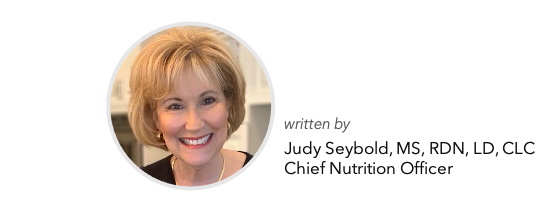Reach Your Wellness Goals with Digital Tools

Apple said it well with their slogan, “There’s an app for that.” This is especially true today when it comes to digital tools that help people improve their wellbeing. Want to eat better, move more, meditate, or manage a chronic condition? There are plenty of ways to make it happen through your smartphone or tablet.
The number of available digital therapeutics and wellness apps, as well as the people using them, continue to skyrocket. Research shows there were 90,000 digital health apps introduced during the first year of COVID-19 alone. And experts estimate the number of people using them will grow from 627 million in 2020 to more than 1.4 billion in 2025.
So Many Options!
With more digital tools than ever before, the challenge is figuring out which one will help you reach your wellness goals.
Wearable Technology
The growth of wearable technology in healthcare has more than tripled in the last four years. With more than 80 percent of people willing to wear fitness technology, experts predict almost 30 percent of the U.S. population alone will use wearable devices by 2025. That includes anything you can wear on your body that tracks your personal health data, heart rate, and movement. Think Fitbits, smartwatches, and wristbands with sensors. There are wearable ECG monitors that measure an electrocardiogram and detect atrial fibrillation; wearable blood pressure monitors; and biosensors that adhere to your body as patches and capture data on your heart rate, respiratory rate, and temperature.
Weight-Loss Apps
With more than 40 percent of Americans reporting they’ve gained weight since the start of the pandemic, many are turning to online weight loss apps to help them shed extra pounds. Recent data from 39 studies show that using technology like apps and wearables results in weight loss 74 percent of the time. Experts attribute this to people being more engaged in tracking their food and other variables when using digital tools rather than relying on pen and paper. But experts also caution that more study is needed: online tools don’t always help to keep the weight off—or work for everybody.
Online Grocery
What do many of these wellness-oriented digital tools have in common? Food. It plays a role in almost every aspect of wellbeing—from diet and exercise, to managing health conditions like diabetes, obesity, heart disease, and even mood and mindset. As more people rely on food as medicine, apps like Sifter matter more than ever before, especially if you’re one of the 200 million people with food allergies and sensitivities.
Sifter makes healthy eating easy by allowing you to shop for foods that match your diet and lifestyle needs. No more wandering up and down grocery aisles, online or in-store, and then spending time trying to decipher complicated nutrition labels. With Sifter, you can:
- Create your personal diet by choosing the filters that match your health and wellness goals—from eating gluten free to managing your diabetes to avoiding nuts and dairy. Save your preferences in a MyDiet Profile to make food shopping even easier and faster.
- Scan By Diet! In the store, use Sifter to scan a product barcode and find out instantly whether the product matches your personal diet. Watch the video to see how easy it is.
- Use RecipeSifter™ to “sift” a recipe by analyzing each ingredient to see if it aligns with your profile. If an ingredient doesn’t match, RecipeSifter lets you swap ingredients that do work. Each ingredient can then be purchased by simply clicking on your favorite retailer.
Be Selective
When it comes to making digital tools work for your needs, the advice here is simple: The best tool is the one you’re most likely to use. Plenty of people download apps in the hope it will get them off the sofa or out of unhealthy eating habits, but almost half of those people don't use the apps for very long, according to research. Before downloading a wellness app, ask and answer the following questions:
- What’s my goal? If you cook most of your meals at home, for example, look for an app that makes it easy to shop for food and to save your favorite recipes.
- How can technology support me? Will you use it alone or in conjunction with a healthcare provider, like a doctor or nutritionist?
Using digital tools to improve your wellbeing is a matter of commitment. It’s about knowing where you want to go, being thoughtful in how you select those applications and digital platforms, and making a plan for how you’ll engage with them successfully.
June 2022
Sources
Digital therapeutics and wellness app users to reach 1.4 billion by 2025
Digital health apps balloon to more than 350,000 available on the market, according to IQVIA report
Latest trends in medical monitoring devices and wearable health technology
About one-in-five Americans use a smart watch or fitness tracker
Mobile Apps for Weight Management: A Review of the Latest Evidence to Inform Practice
Weight Loss Apps Will Likely Help You Shed Pounds, an Analysis Finds
Post-pandemic weight loss: There’s an app for that
Lots of people download health apps, but here's why many stop using them